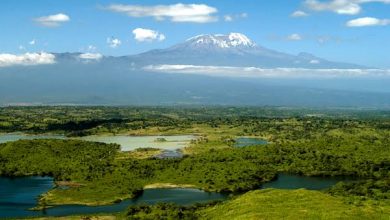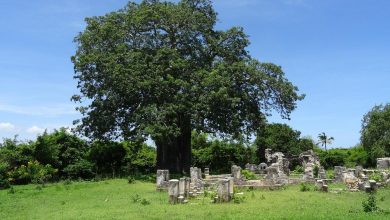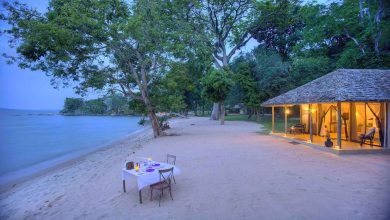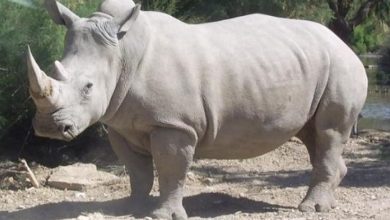Pwani Yetu Project strengthens media voices to safeguard TZ’s coastal, marine biodiversity
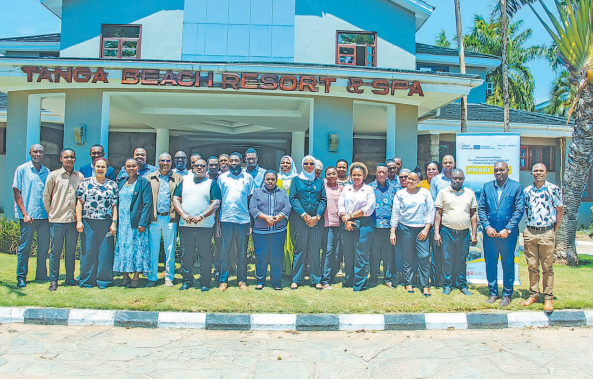
TANGA: THE journey from Dar es Salaam to Tanga stretches across scenic landscapes, a road trip of nearly 350 kilometres that revealed the changing faces of Tanzania’s coastline.
Arriving in Tanga, one is immediately struck by the city’s quiet charm and their roads are numbered from the First to the Twenty-First (21) each lined with a blend of Swahili heritage and colonial-era architecture.
Beyond the streets, Tanga’s natural beauty unfolds through its calm beaches, rich history and welcoming people, making it the perfect host for a conversation on conservation and the future of our coasts.
It was at one of best Tanga hotels, in a serene corner known as Kahale, where a three-day seminar gathered 30 journalists from coastal regions including Dar es Salaam, Tanga, Lindi and Pwani. The training, organised under the ‘Pwani Yetu’ Project, sought to strengthen the ability of Tanzanian media professionals to report on environmental issues.
According to unofficial estimates current statistics show that only two out of every ten journalists in the country can effectively tell stories about the environment a gap this project aims to close.
With support from the European Union (EU) and Germany’s Federal Ministry for the Environment (BMUV) and implemented by GIZ Tanzania, the initiative goes beyond capacitybuilding. It is about equipping storytellers to bridge science with society, ensuring that communities understand the value of biodiversity, climate resilience and the blue economy.
Briefing about the project of Pwani Yetu during the training, Technical Expert, Dr Robert Katikiro narrated that the Pwani Yetu Project is a community-based initiative that focuses on improving the well-being of coastal communities in Tanzania, particularly in regions such as Tanga, Lindi and Mtwara.
“The project aims to strengthen local livelihoods, protect marine and coastal ecosystems and empower communities through sustainable development practices,” he briefed.
“One of the key aspects of the project is its emphasis on community participation. By involving local fishermen, women’s groups and youth organisations, Pwani Yetu ensures that development initiatives are not only sustainable but also address the real needs of the people. This participatory approach helps build ownership among community members and promotes long-term positive change,” he said.
He pointed out that, “Pwani Yetu contributes directly to the Team Europe Initiative, Blue Economy for Job Creation and Climate Change Adaptation in Tanzania. The project’s primary goals are to strengthen the protection of coastal and marine biodiversity while at the same time building climate resilience within coastal communities.”
In addition, Dr Katikiro narrated that, “Social and economic empowerment, Pwani Yetu integrates environmental protection into its strategies. It advocates for the sustainable use of marine resources, conservation of mangroves and climate change adaptation measures that safeguard the coastal environment,”
“This is particularly important as many coastal communities depend directly on the sea for their livelihoods, making them highly vulnerable to environmental degradation and climate change impacts. Pwani Yetu has been working to improve communication and collaboration between the government, civil society and local communities,” he factored out.
He encouraged that, “Through training programmes, workshops and awareness campaigns, it strengthens the capacity of journalists and stakeholders to report on issues affecting the coast, ensuring that voices from the grassroots are heard at regional and national levels.”
“At the same time, Pwani Yetu supports the establishment and coordination of multi-actor processes at both national and regional levels. This includes promoting dialogue among different stakeholders and creating frameworks that ensure inclusive participation in decisionmaking,” he pointed out.
The Chief Executive Officer of Nukta Africa, Mr Nuzulack Dausen elaborated that they recognise the profound importance of such programmes in equipping participants with the knowledge, skills and confidence necessary to excel in their respective fields.
Training serves as a platform for capacity building, allowing participants to gain insights into best practices, modern methodologies and practical applications that they can implement in realworld scenarios.
“One of the main benefits of the training is knowledge sharing. Participants come with diverse experiences and perspectives and through interactive discussions, case studies and group activities, they learn from each other as much as from the training content. As a facilitator, my role is to create an inclusive environment where questions are encouraged, ideas are explored and collaboration is promoted,” he said.
Mr Dausen remarked: “This interaction enhances understanding, sparks innovation and builds a network of professionals who can continue supporting each other beyond the training. Also training helps bridge knowledge and skill gaps. Many participants may have theoretical understanding but lack practical exposure or confidence to apply their knowledge effectively.
ALSO READ: Tanga is not just a town, it’s an untapped goldmine
“As journalists, writing about sea resources is more than just reporting it is a vital responsibility that connects communities, policymakers and the environment. Our oceans and coastal areas are home to a wealth of biodiversity, support the livelihoods of millions and play a critical role in climate regulation. By telling stories about sea resources, we raise awareness of both their value and the challenges they face, such as overfishing, pollution and the impacts of climate change.
“One of the main reasons journalists should focus on sea resources is to inform the public. Many people rely on marine resources for food, income and recreation, yet they may not understand the pressures these resources face. Well-researched stories can highlight issues such as unsustainable fishing practices, habitat destruction, or marine pollution, giving communities the knowledge they need to make informed decisions and advocate for sustainable practices,” he reported.
Mr Jimmy Kiango was one of the participants as a journalist in the training. He narrated that he often struggled to make scientific and environmental topics appealing to my readers. Most of the time, he relied on press releases or copied information without deeply analysing the data.
“During the three days in Tanga, I discovered how scientific data can be transformed into compelling stories that not only inform but also inspire action. For me, the session on results-based reporting was a turning point. It showed me how to go beyond mere descriptions and focus on measurable outcomes that communities and policymakers can relate to.
“I now understand the importance of making donor contributions visible without losing the human touch in my reporting. Another highlight was the exposure to concepts of the blue economy something I had only heard about in passing before. Now I can confidently explain its link to fisheries, tourism and livelihoods in ways that my audience will grasp,” he expressed.
Mr Kiango noted that the training has broadened skills, strengthened confidence and connected him with other journalists who are equally passionate about environmental storytelling.
“I leave Tanga with renewed energy to ensure that coastal and marine conservation issues find consistent space in the media,” he said.
To her part, Ms Hadija Omary, noted that, as a journalist, she has always wanted to write about environmental challenges, but she lacked the technical knowledge to interpret complex reports or scientific findings. The training under the Pwani Yetu Project, she said, has been a real eye-opener.
“One of the most valuable lessons for me was learning how to translate biodiversity and climate resilience concepts into simple, audience-friendly language. For example, instead of saying ‘ecosystem degradation,’ I now know how to illustrate it through everyday realities like dwindling fish catches or rising sea levels affecting coastal homes,” she noted.
She concluded, “The practical sessions gave me confidence to turn technical results into stories that resonate with ordinary citizens. Another benefit was the networking aspect. Bringing together journalists from Dar es Salaam, Tanga, Lindi and Pwani allowed us to share experiences and challenges, while building solidarity for more consistent coverage of conservation. I also appreciated the discussions on donor visibility,” she said.
The three-day seminar in Tanga was more than just a training but it was a call to action. Journalists left equipped with new skills, deeper insights and a renewed sense of responsibility to tell the stories of Tanzania’s coastlines with accuracy and passion.
The beauty of Tanga itself its numbered streets, calm beaches, and cultural heritage served as a reminder of what is at stake if marine and coastal ecosystems are not protected.
As participants return to their newsrooms, the hope is that their reporting will not only inform but also inspire communities to value biodiversity, embrace climate resilience and safeguard the blue economy for generations to come.


